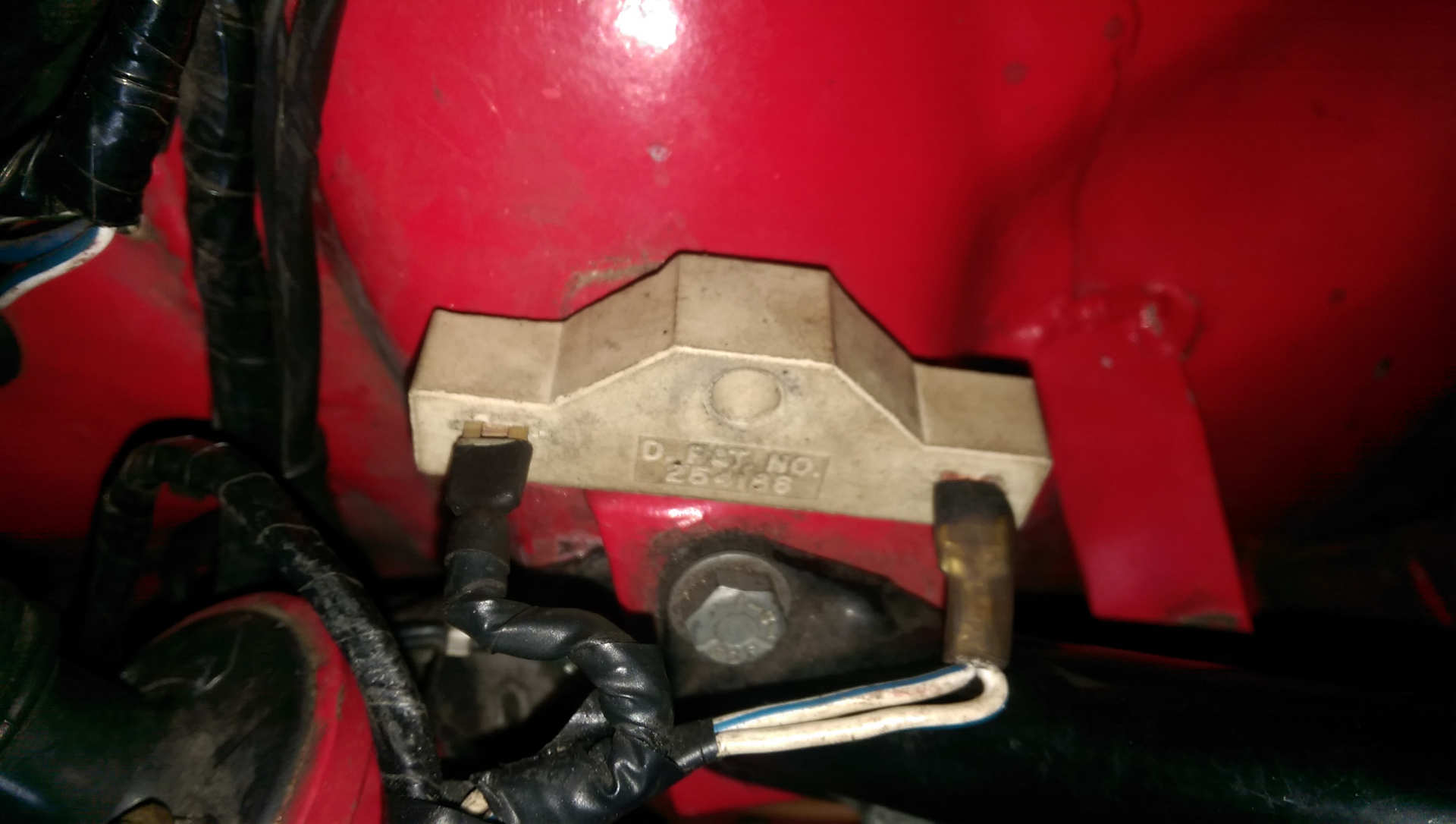Post any Tech Tips or any matters and questions relating to upkeep
-
joetiger
- Posts: 11
- Joined: Tue Jun 16, 2015 2:46 pm
Post
by joetiger » Mon Dec 14, 2015 4:03 pm
Hi all,
There is a piece of eletrical kit between the fuse box and the coil / starter assembly area. I don't recognise what it is, but it's blown and I need a replacement.
Does anyone know what this is?


[/img]
-
joetiger
- Posts: 11
- Joined: Tue Jun 16, 2015 2:46 pm
Post
by joetiger » Mon Dec 14, 2015 5:21 pm
And I think I've identified it as a ballast resistor.
That right?
Thanks!
-
Tomaselli
- Posts: 942
- Joined: Fri Sep 30, 2005 2:03 pm
- Location: Cheshire, North West England
Post
by Tomaselli » Mon Dec 14, 2015 9:07 pm
Indeed, a ballast resistor Joe. On mine, they are slightly different to the version with the ceramic casing. Assume the ceramic ones are a modern take - not sure.

I got a few out of the US, far cheaper than any UK suppliers!
http://www.macsautoparts.com/ford_thund ... 56-57.html
-
bigbob
- Posts: 379
- Joined: Wed Aug 19, 2009 11:31 am
Post
by bigbob » Tue Dec 15, 2015 12:16 pm
Something to do with the starter. Chucked mine out years ago. Seems all right without it.
-
tigertim
- Posts: 85
- Joined: Mon May 25, 2015 11:06 pm
- Location: Kent
Post
by tigertim » Tue Dec 15, 2015 7:26 pm
Joe. The ballast resister reduces the resistance to the coil allowing it to run cooler. You can run without it but the coil may run hotter. They stem from the days when we had conventional points. If you left the Ignition on and the points were closed it would burn out the coil. this tends not to be the case with electronic points. Tim
-
Tomaselli
- Posts: 942
- Joined: Fri Sep 30, 2005 2:03 pm
- Location: Cheshire, North West England
Post
by Tomaselli » Tue Dec 15, 2015 8:35 pm
Great explanation Jim! In a language even I can understand,

was never good at Physics at school

-
redbaron
- Posts: 111
- Joined: Sun Aug 16, 2009 6:18 pm
- Location: Essex
Post
by redbaron » Tue Dec 15, 2015 10:46 pm
Joe,
the use of Ballasted coils was in order to help stop the ignition contacts from burning by cutting down on the voltage flowing through them.
The ballast resistor in fact creates a resistance to the voltage to reduce it to around 9 volts,allowing a coil which will run at a lower voltage.
Another benifit of running a coil like this is that with a by pass circuit,usually via the solenoid ,is that a "boost" to 12 volts can be used during cranking to help start the engine.Do not run a ballast coil on 12 volts as they will soon burn out.
It is not good practice to leave any ignition circuit switched on without the engine running as a coil will overheat,ballasted or not.
Some Electronic systems also still need a ballasted coil.
-
joetiger
- Posts: 11
- Joined: Tue Jun 16, 2015 2:46 pm
Post
by joetiger » Thu Dec 17, 2015 1:40 pm
Thank you all!
I've decided to install an electronic ignition, so I can do without this.
Thanks!

 [/img]
[/img]
 [/img]
[/img]